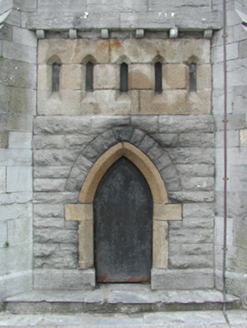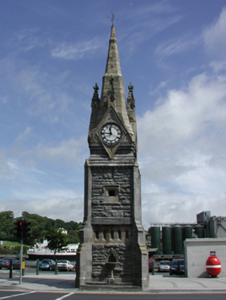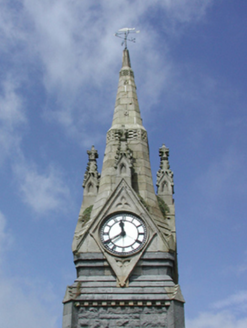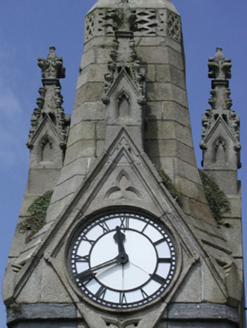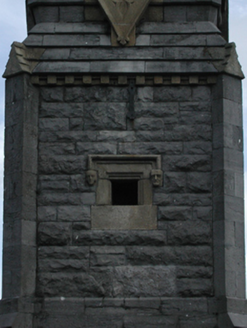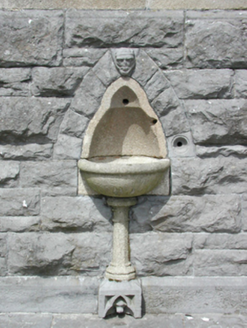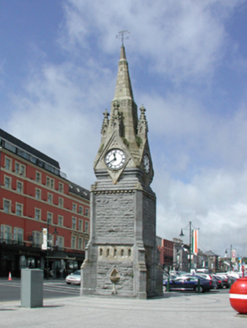Survey Data
Reg No
22502675
Rating
Regional
Categories of Special Interest
Architectural, Artistic, Scientific, Technical
Original Use
Clock
In Use As
Clock
Date
1860 - 1865
Coordinates
260716, 112599
Date Recorded
18/06/2003
Date Updated
--/--/--
Description
Freestanding single-bay two-stage clock tower, built 1861-2, on a square plan with broach spire. Coursed rock faced cut-limestone walls on benchmark-inscribed drag edged tooled cut-limestone chamfered plinth on cut-limestone stepped base with drag edged tooled limestone ashlar diagonal stepped buttresses to corners having drag edged tooled cut-limestone "slated" capping; granite ashlar broach spire on drag edged tooled cut-limestone "slated" base with wrought iron weathervane to apex. Pointed-arch door opening (north) with bull nose-detailed cut-limestone step, and cut-granite block-and-start surround having chamfered reveals framing cast-iron door. Square-headed window opening (south), cut-granite block-and-start surround having moulded reveals with hood moulding on portrait label stops. Quay fronted on cobbled footpath.
Appraisal
A steeple-like clock tower designed by Charles Tarrant (1815-77), Surveyor to the Grand Jury of the City of Waterford (appointed 1855), representing an important component of the mid nineteenth-century built heritage of Waterford with the architectural value of the composition confirmed by such attributes as the compact square plan form; the robust rock faced surface finish with sheer limestone and silver-grey granite dressings producing an interplay of light and shade; and the crocketed pinnacles embellishing the gently tapering broach spire. NOTE: A clock tower was first proposed in December 1859 when the Corporation of Waterford was asked to vote on a motion providing £150 for 'an illuminated clock for the benefit of shipping'. The clock tower, erected 'by public subscription, was completed at a cost of £200. The clocks, donated by the Corporation of Waterford at a cost of £78 10s. 0d., were installed (1864) by James Mosley and Sons (established 1832) of 97-98 The Quay with the four transparent dials intended to be illuminated by way of four gas jets (Waterford Mail 31st October 1864). The clock tower doubled as a drinking fountain, for equine and human consumption, the three granite stoups guarded by stern-faced portrait keystones but the water was quickly deemed unfit for human consumption and it was proposed that it be redirected into troughs for the benefit of cattle on overheated market days (Waterford Standard 14th June 1871).
